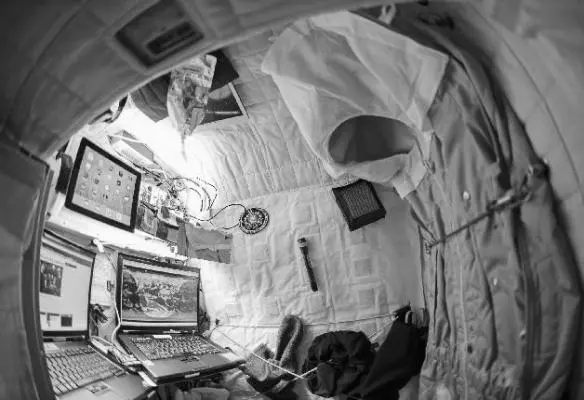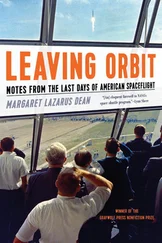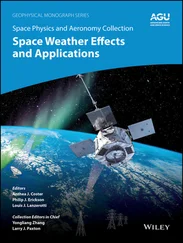5

April 3, 2015
Dreamed I was working in a Soviet-era car refurbishment plant with Soviet soldiers, wearing their olive-green full-length wool coats and their Russian hats. The plant took old crappy Soviet cars and cleaned them up, maybe for resale and maybe for some other nefarious purpose. I wasn’t sure. I was responsible for cleaning the engines with a big steamer. Each time I sprayed, engine oil splattered all over the room, and I worried that I was somehow doing it wrong. I wondered how the room would be cleaned.
MY GOAL FOR most of my adult life has been to pilot aircraft and spacecraft. So it sometimes strikes me as odd that the International Space Station doesn’t need to be piloted at all. When I try to explain this to people who don’t know much about the station, I tell them it’s more like a ship traveling the world’s oceans than like an airplane. Something like the USS La Jolla, a submarine I served on for a few days as a midshipman while still in college, which was self-contained and self-powering. We don’t fly the space station—it’s controlled by software, and even if human intervention is needed, it is controlled by laptops on board or on the ground. We live in the space station, the way you live in a building. We work in it, the way scientists work in a laboratory, and we also work on it, the way mechanics work on a boat, if the boat were adrift in international waters and the Coast Guard had no way to reach it.
I sometimes see the station described as an object: “The International Space Station is the most expensive object ever created.” “The ISS is the only object whose components were manufactured by different countries and assembled in space.” That much is true. But when you live inside the station for months, it doesn’t feel like an object. It feels like a place, a very specific place with its own personality and its own unique characteristics. It has an inside and an outside and rooms upon rooms, each of which serve different purposes, its own equipment and hardware, and its own feeling and smell, distinct from the others. Each module has its own story and its own quirks.
I’ve been on station for a week now. I’m getting better at knowing where I am when I first wake up. If I have a headache, I know it’s because I’ve drifted too far from the vent blowing clean air at my face. I’m often still disoriented about how my body is positioned—I’ll wake up convinced that I’m upside down, because in the dark and without gravity, my inner ear just takes a random guess as to how my body is positioned in the small space. When I turn on a light, I have a sort of visual illusion that the room is rotating rapidly as it reorients itself around me, though I know it’s actually my brain readjusting in response to new sensory input.
The light in my crew quarters takes a minute to warm up to full brightness. The space is just barely big enough for me and my sleeping bag, two laptops, some clothes, toiletries, photos of Amiko and my daughters, a few paperback books. Without getting out of my sleeping bag, I wake up one of the two computers attached to the wall and write down what I remember of my dreams. After my last flight, people were interested in my descriptions of the vivid and surreal dreams I had in space, but I forgot most of them, so I’m making a point of keeping a more consistent dream journal this time.
Then I look at my schedule for today. I click through new emails, stretch and yawn, then fish around in my toiletries bag, attached to the wall down by my left knee, for my toothpaste and toothbrush. I brush, still in my sleeping bag, then swallow the toothpaste and chase it with a sip of water out of a bag with a straw. There isn’t really a good way to spit in space. I spend a few minutes looking over the daily summary sent up by the Mission Control Center in Houston, an electronic document that shows the state of the space station and its systems, asks us questions they came up with overnight, and includes important notes for the plan we’re going to execute that day. There’s also a cartoon at the end, often making fun of either us or themselves. Today’s daily summary shows it’s going to be a challenging day, and these are the days I look forward to.

My crew quarters on board the ISS, a place to sleep but also my personal private space. My home in our home away from home for a year. Credit 3 ILLUSTRATION CREDITS Nathan Koga 1, 2, 5, 6, 7, and 8: NASA; 3 and 4: NASA/Scott Kelly Illustrations NASA 9 and 10; Scott Kelly 11 and 12, U.S. Navy 13; NASA 14; NASA 15 and 16; NASA 17 and 18; NASA 19 and 20; NASA 21 and 22; Scott Kelly 23, Stephanie Stoll/NASA 24, NASA 25; NASA/Bill Ingalls 26, NASA 27; NASA 28, NASA/Bill Ingalls 29; NASA/Bill Ingalls 30, NASA 31; NASA 32, NASA/Bill Ingalls 33; NASA/Bill Ingalls 34 and 35; NASA/Bill Ingalls 36, NASA 37; NASA 38 and 39; Scott Kelly/NASA 40, NASA 41; NASA 42, NASA/Scott Kelly 43; NASA 44, NASA/Scott Kelly 45; NASA/Scott Kelly 46, NASA 47; NASA/Scott Kelly 48 and 49; NASA/Scott Kelly 50 and 51; NASA/Bill Ingalls 52 and 53; NASA/Bill Ingalls 54; NASA 55
Mission control schedules our days into increments as short as five minutes using a program called OSTPV (Onboard Short Term Plan Viewer), which rules our lives. Throughout the day, a dotted red line moves relentlessly across the OSTPV window on my laptop, pushing through the block of time mission control has estimated for each task. NASA people are optimists by nature, and unfortunately this optimism can extend to the estimate of how long it will take me to perform a certain task, such as repairing a piece of hardware or conducting an experiment. If I take longer than scheduled to complete a task, the extra time has to come out of something else on the schedule—a meal, my exercise time, the brief time I get to myself at the end of the day (which OSTPV labels “pre-sleep”), or—worst of all—sleep. Most of us wind up having complicated relationships with the line on the OSTPV screen. Sometimes when I’m working on something challenging, the line seems to speed up malevolently, and I could swear something is wrong with it. Other times, it seems to settle down and match the passage of time as I perceive it. Of course, if I could somehow zoom out my view of the schedule wide enough to take in the entire year, the line would be creeping forward so slowly it wouldn’t appear to be moving at all. Today’s schedule seems well thought out, but there are a few ways in which things could go wrong. For Terry, Samantha, and me, much of today is to be taken up with one long task labeled DRAGON CAPTURE.
From the outside, the International Space Station looks like a number of giant empty soda cans attached to one another end to end. The length of the station is made up of five modules connected the long way—three American and two Russian. More modules, including ones from Europe and Japan as well as the United States, are connected as offshoots to port and starboard, and the Russians have three that are attached up and down (we call these directions zenith and nadir). Between my first mission to the space station and this one, it has grown by seven modules, a significant proportion of its volume. This growth is not haphazard but reflects an assembly sequence that had been planned since the beginning of the space station project in the 1990s. Whenever visiting vehicles are berthed here—resupply spacecraft like the Russian Progress, American Cygnus, Japanese HTV, or SpaceX Dragon—for a time there is a new “room,” usually on the Earth-facing side of the station; to get into one of them, I have to turn “down” rather than turning left or right. Those rooms get roomier as we get the cargo unpacked, then get smaller again as we fill them with trash. Not that we need the space—especially on the U.S. segment, the station feels quite roomy, and in fact we can lose one another in here easily. But the appearance of extra rooms—and then their disappearance, after we set them loose—is a bit strange. It used to be that uncrewed cargo vehicles were built as one-use spacecraft, and after we detached them from the station they burned up in the atmosphere. The relatively new SpaceX Dragon has the capability to return to Earth intact, which gives us more flexibility.
Читать дальше














